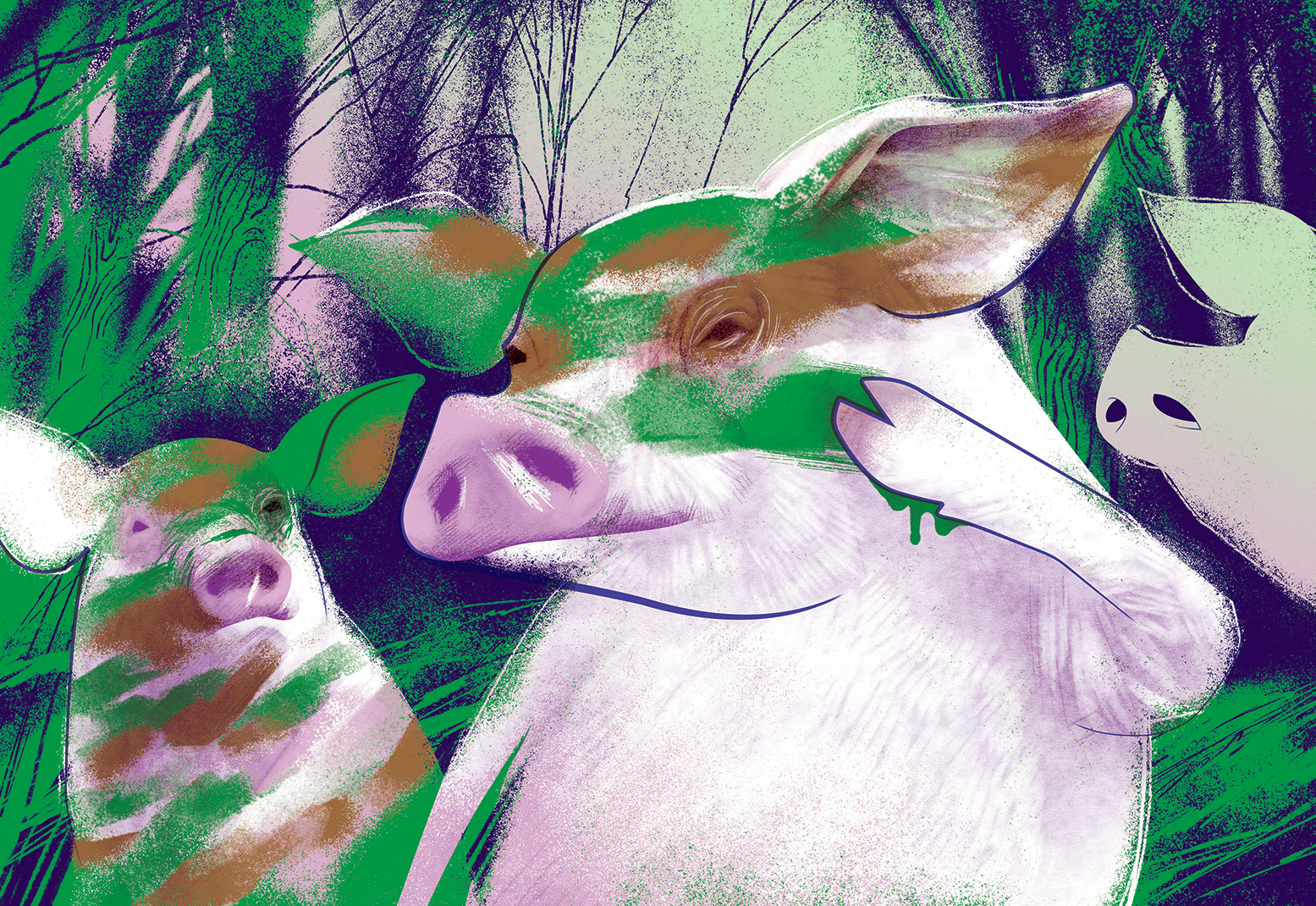By Will Dunn
Copyright newstatesman

The trailer is opened and the pigs emerge. At first they are uncertain, and they have a right to be, because at some point one of these trailer journeys will end at the sausage factory – but not yet. Today they are being let loose in the New Forest. As the animals come to realise that they are free they become jubilant, galloping about the place like dogs on holiday, oinking merrily and charging a group of nearby donkeys. In the farmyard, different breeds of pig must be kept apart or else they will fight. In the forest the two breeds, Wessex Saddlebacks and Large Blacks, mix amiably as they begin crunching the acorns that carpet the ground. They are rich in space and food; there is nothing for them to quarrel over. The same cannot be said of all the forest’s inhabitants.
This release of pigs into the forest is known as pannage. Commoners – farmers whose animals graze the common land – have been letting their pigs out to eat the acorns, chestnuts and beech mast that fall from the trees in autumn for at least a thousand years. There are around 700 commoners today, and they are overseen by the Verderers, an ancient form of forest government. Among the Verderers’ byelaws is a requirement for commoners to ensure that “no person shall cause or allow any horse, cattle, pig or sheep… to enter or be at large in the Forest… when he has reason to suspect… that the animal is vicious [or] mischievous”. With nearly 10,000 animals loose in the forest – mostly ponies and cattle – the consequences of an outbreak of mischief do not bear thinking about. The first Verderer was appointed by William the Bastard (who would later rebrand as the Conqueror) in 1068, making it one of the oldest political titles in England. It predates the office of prime minister by six centuries. For a long time the Verderers’ role was to impose forest law, to maintain the forest as a hunting ground (the Conqueror’s successor, Rufus, died from an arrow wound in the New Forest in 1100) and a source of venison for the royal larder. Over time it became an early form of local government, part of the line that runs from the Anglo-Saxon reeves to the officials who run Britain today.
The Verderers meet in open court once a month in a wood-panelled room, its chequered floor sagging beneath the centuries; the Court of Swainmote has met on the site since the 14th century. A commoner who wishes to address the Verderers must stand on a pulpit made from irregular chunks of oak; the forest elders themselves (they are all retirees) sit on a long pew that, I am told, quickly becomes uncomfortable. Facing the commoner as they make their presentiments to the court is an iron implement, black with time, that was once used for some antique form of animal cruelty. On the wall behind the pulpit is a pair of skulls that belonged to two male deer that engaged in combat, became locked at the antler and, unable to exit their grapple, starved to death. As a visual metaphor for the endless planning applications and boundary disputes of local government, it seems ideal.
Lyndhurst, where the court sits, is a town founded on the Victorian passion for killing animals and then staring at them. When the Victorian gentry learned about the biodiversity of the New Forest – particularly its rare butterflies and birds – they descended on the area to shoot or poison as much of that biodiversity as they could, and to have it stuffed and mounted in glass cases in their drawing rooms. They built large, red-brick houses, hotels and a large, red-brick church. This wave of tourism also created a new role for the Verderers as stewards of the “ancient ornamental woods and trees”, as codified in the 1877 New Forest Act. There are now ten Verderers, five of whom are elected (from a constituency of just over 500 voters) and five of whom are appointed.
Since the passing of that act, the longest-serving Verderer is Anthony Pasmore, whose father was a Verderer and who first sought election to the office to oppose the building of a bypass around Lyndhurst. The Victorians, who had the railway line avoid Lyndhurst in order to maintain the peace of the town, would have been horrified by the HGVs that now rumble through its centre, but Pasmore is more interested in the peace of the forest: this he takes very seriously indeed.
He lives in a cottage at the end of a lane, off a little village green grazed to the texture of a billiard table by the ponies and cows that wander freely. “I like to be able to go out onto a stretch of heathland,” he told me as we sat on either side of his fireplace, “not to hear traffic noise, not to hear aircraft noise, not to see hordes of people. If I see a chap walking with a knapsack on his back and a pair of binoculars around his neck, I think: good luck to him. He’s going there quietly. He’s respecting his surroundings. That’s fine. If I see 40 or 50 mountain bikers charging across the heath, crashing through everything… generally making a nuisance of themselves… that’s not fine.”
Pasmore’s sworn enemy is the mountain biker, against whom he has lobbied for decades. I found a local newspaper column by him decrying velocipede hooliganism from 1994, when the sport was becoming much more popular. In June 2020 Pasmore wrote in his “New Forest Notes” that with the loosening of lockdown restrictions, the forest had descended into “anarchy”. “The floodgates opened,” he wrote. The forest had become “a vast unregulated cycle track. The car parks filled to overflowing, fires were lit” by people who showed nothing but “contempt for the qualities which make the forest so important”. The anarchic hordes of hedonists were interested only to “amuse themselves without restriction exactly as and when they please”. The sylvan glades of the ancient wood were being reduced to “an ill-regulated, increasingly dirty, damaged and abused urban park”. An urban park! Eurgh!
Today the situation is less anarchic, but Pasmore considers the Verderers to be fighting a forlorn hope against the forces of leisure. He recalled the overgrown paths of West Dorset that he trod as a child, worn now into deep grooves by people, so many people. “We live in a very overcrowded country,” he told me. His life’s work has been to guard a few remaining pockets of tranquillity against the ideas of “extreme conservationists”, the mountain bikers and day-glo fun-runners who would swarm into the dingles of deepest England. “I don’t mind being seen as a killjoy,” he said.
The greater danger to the forest may not be from the bicycles but from property prices, and the end of the subsidy schemes that have supported the Commoners for decades. Andrew Parry-Norton, whose Saddlebacks I observed cavorting beneath the oaks, told me that the successor to the EU basic payment scheme will end in 2028, and there could be a gap of three years before another scheme supports commoning in the New Forest. No one can afford to make a living – let alone to buy a home in the New Forest, where property prices are more expensive than in any other national park – on the income from letting pigs wander about. That grazing of the forest by commoners’ animals is what makes it so improbably picturesque. It is what helps to create the managed, medieval woodland of a culture’s shared imagination, which draws 17 million tourist visits a year. If it was a painting, this place would be saved for the nation. For now it is left to the pigs to sort out.
[See also: Trump visits his vassal state]



